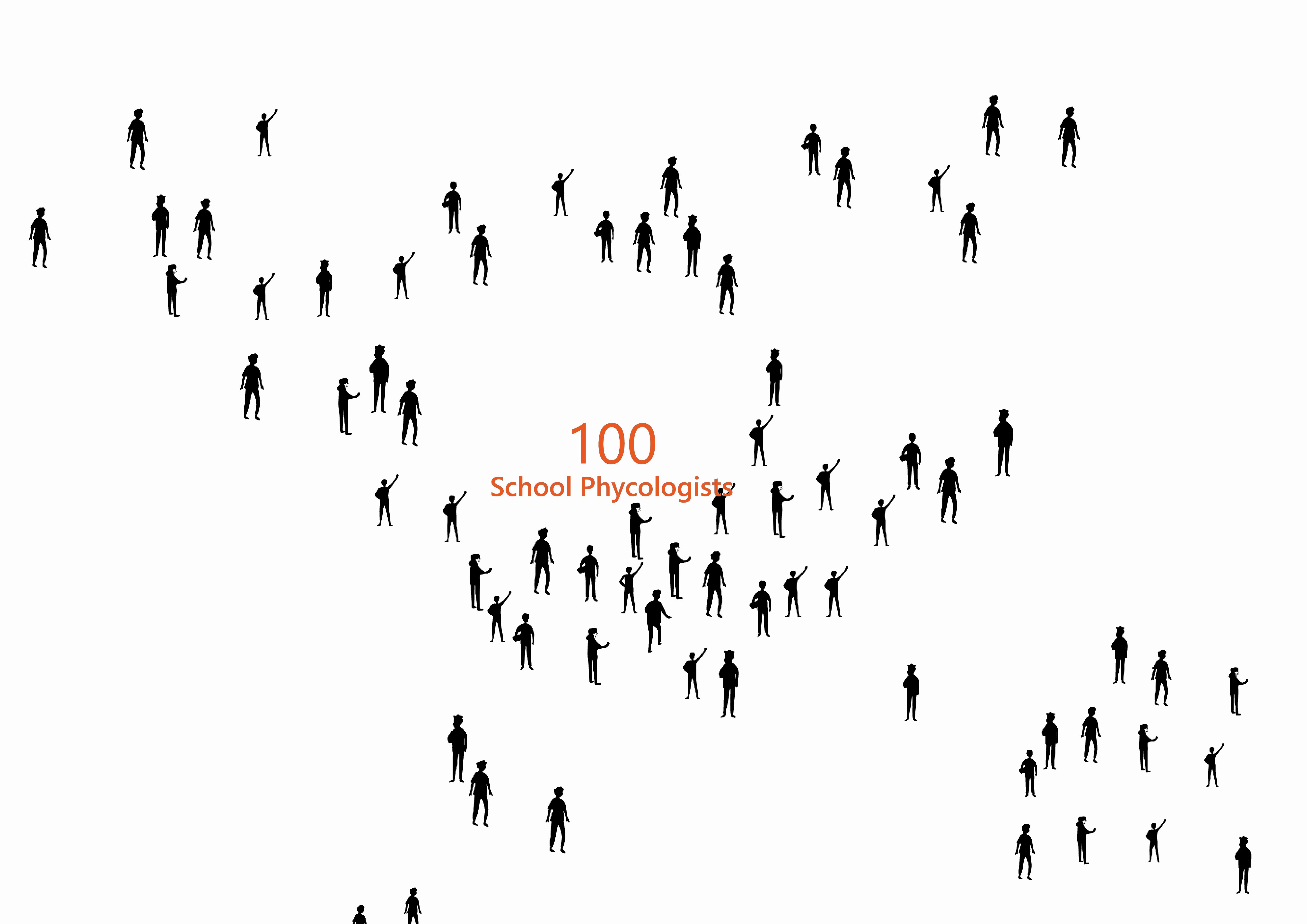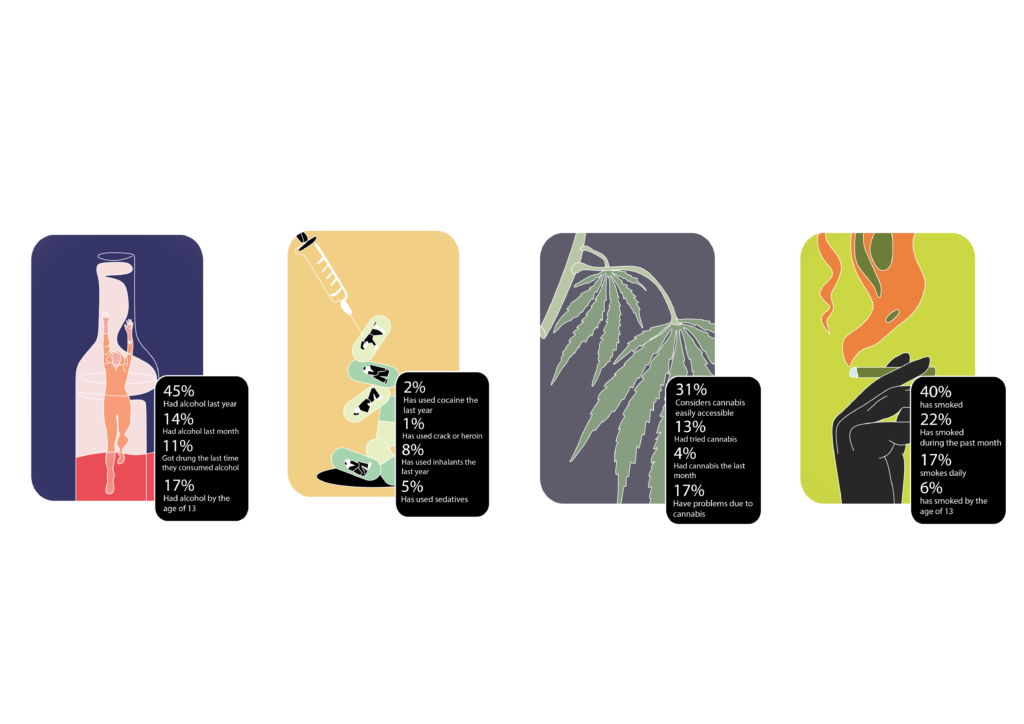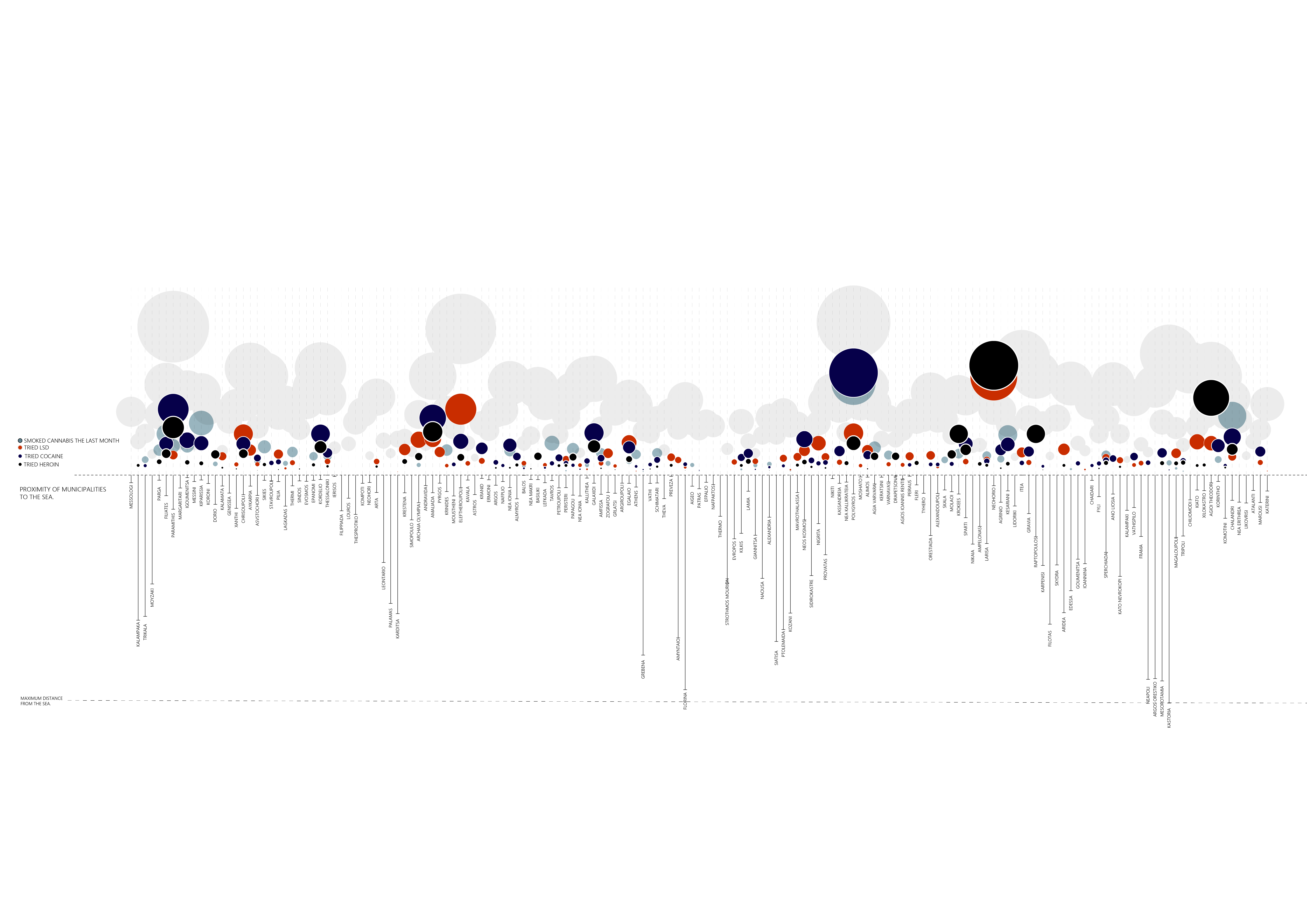A Visual Story by:

According to World Health Organization, 1/5 adolescents engage in some form of substance use.
The Question of 100 School Phycologists: How planning could contribute towards the understanding of geographic patterns of substance use in order to distribute human resources all around the country?

This visual story, seeks to explore the geographical patterns of substance use behaviours among adolescents in Greece. The data visualization of this story, is based on a survey asking 17.300 Greek high school students questions concerning their habits on substances use. The European School Survey Project on Alcohol and other Drugs (ESPAD) | 2019.

It’s important to note that substance use among adolescents is a complex issue that cannot be fully explained by geographic factors alone. Other factors, such as economic and social inequality, access to healthcare and support services, and cultural attitudes towards substance use, also play a significant role. This narrative emphasise in visualizing and searching geographic patterns for substance use behaviour in national level.

The pattern for alcohol use seems to be more intense in coastal areas and in the mainland and in the North of the country in comparison to the islands. Considering the cannabis use, it looks like it is evenly distributed to the coastal areas and mainland as well as in the islands. In total 13% o the students tried cannabis.Smoking, as expected is also evenly distributed around the country with heavier use in Central Greece and the islands on the eastern part of the Aegean sea. In total, 40 percent of the adolescent have smoked. 1 % of the students who filled the survey reported heroin use. Those are students who live in municipalities that are mostly located to coastal areas but not in the two big cities.LSD use shows similar patterns with heroin only this time 2%of the students have used LSD.ocaine is used in higher levels by adolescents in coastal areas as well as the islands. As indicated with a dark stroke. high school students who reported cocaine as an easy to find substance are again not concentrated in the big cities.
Is proximity to the sea correlated with different kinds of substance use patterns? To find out we will give a closer look at the distance of each one of the schools from the sea, in relation to the local substance use behaviour.

In fact, isolation of islands and many other coastal areas, could be possible a topic for further investigation. This experimental study could provide information about hierarchized interventions towards dealing with substance use from adolescents. Could a possible answer will be the support of the health sector with doctors and phycologists being able to help high school students in isolated coastal areas? Or is it the lack of infrastructure for leisure that negatively affects their behaviour?
Special thanks to my friend Nikos Angelopoulos MD, PhD(c), who provided the data and the scientific background for this project.

